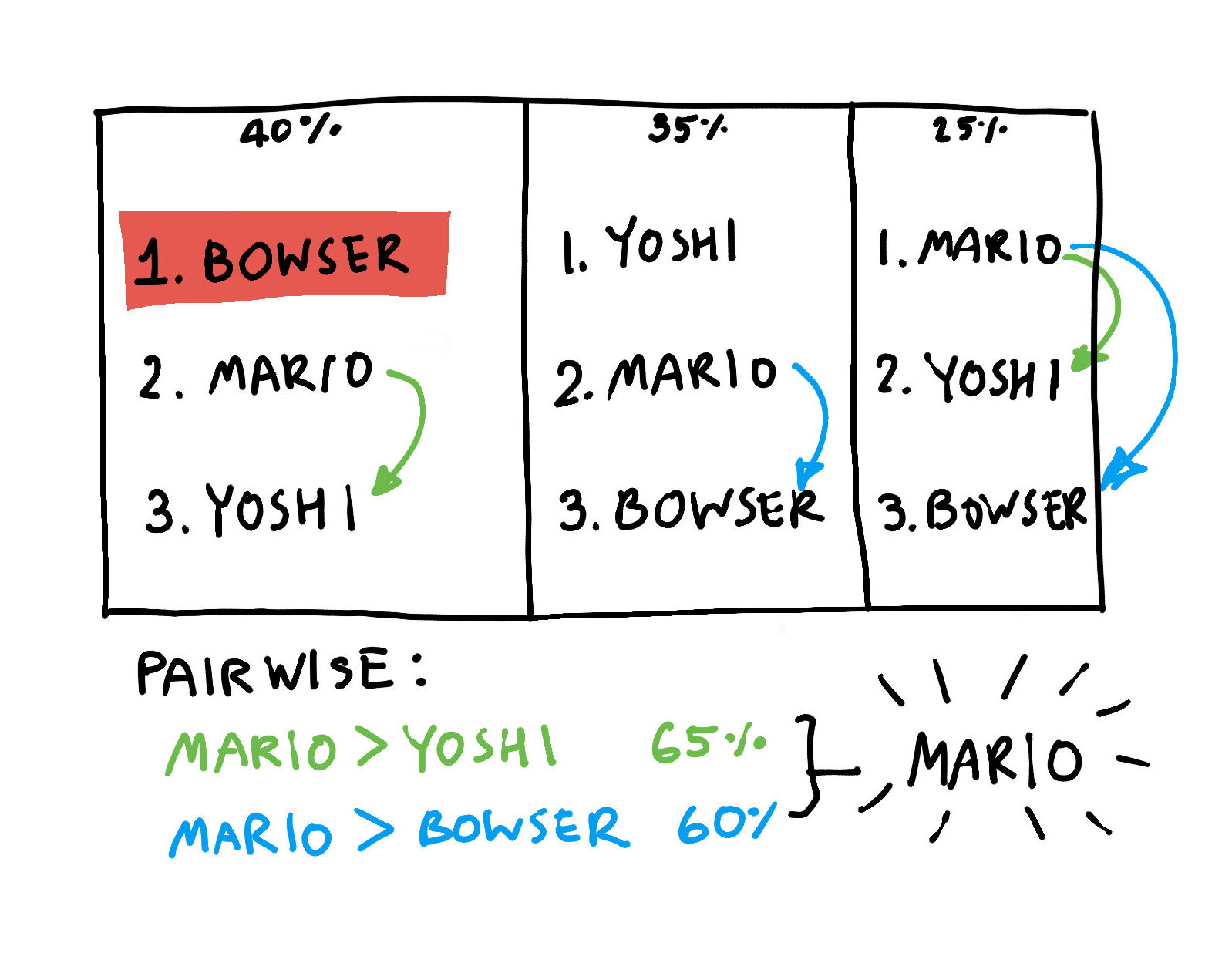Remember the first time in a classroom when we made a collective choice? With our little hands raising, everyone together decided who got to be the class representative. The person who got the most hand-ups for became the class leader. It is a default selection method. Effective, simple, and reflecting the majority’s wish. Right?
Not necessarily so.
Often mistaken for majority voting, this mechanism is called plurality voting. In plurality voting, you cast a single vote for your top choice. The winner is the one that receives the most votes. Plurality voting is straightforward and is used in many formal elections. However, it is possible that the outcome of a plurality vote doesn’t reflect the preferences of the majority at all.
Let’s make it concrete with an example. Suppose, in the absence of its princess, the Mushroom Kingdom citizens decide to give democracy a chance. Three candidates step up to lead the kingdom: Mario, Yoshi, and Bowser. The Mushroom Kingdom voters are divided into three groups as shown in the table below (adapted from an example in Collective Choice and Social Welfare).

Here, 40% of voters rank Bowser as their top candidate, followed by Mario, then Yoshi. 35% of voters rank Yoshi as their top candidate, followed by Mario, then Bowser. The last group (25% of voters), rank Mario as their top candidate, followed by Yoshi, then Bowser.
If we use the popularity rule, the winner of the election is Bowser, chosen by 40% of the voters. However, Bowser ranks last for 60% of the voters. If you consider each pair of candidates, you will see that 65% will choose Mario over Yoshi and 60% will choose Mario over Bowser. In pairwise comparisons, the winner is Mario and not Bowser.
Stepping outside of the Mushroom Kingdom, plurality voting is prevalent and is often mistaken as majority voting. One example would be the US Republican Primaries for the 2016 presidential election where Donald Trump became the presidential candidate even though he failed to gain majority votes in multiple rounds (only 33 percent in Arkansas).
Plurality voting has its advantages. It is easy to understand and execute. Yet it sometimes fails to reflect what the majority of the group wants. Our society has developed far from when the plurality voting was adopted. With the current technology, we can, at scale, support voting mechanisms that better reflect the wish of the society. This is not to say that we should stop using plurality voting altogether. Just a reminder that society should be aware of the mechanism used to make a collective decision and choose the one that fits the job.